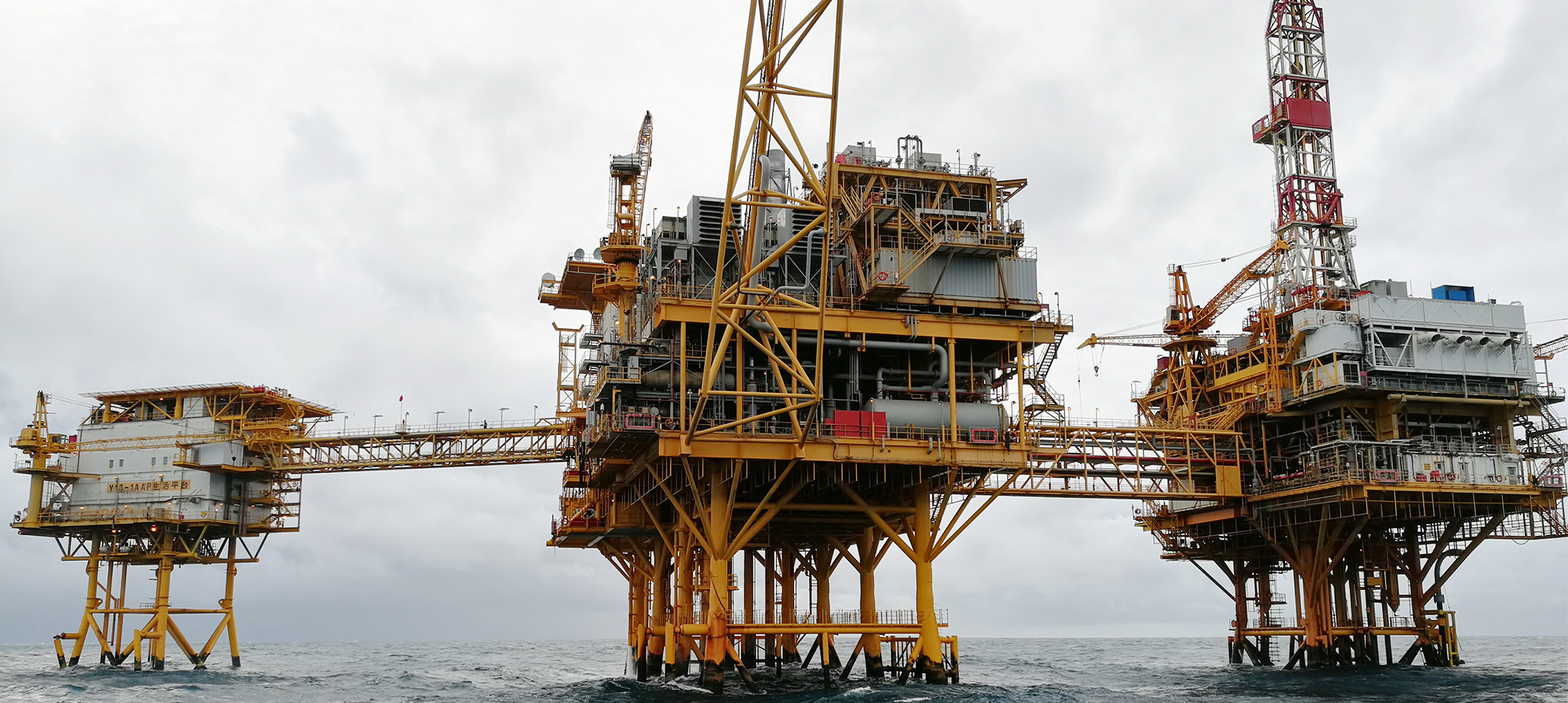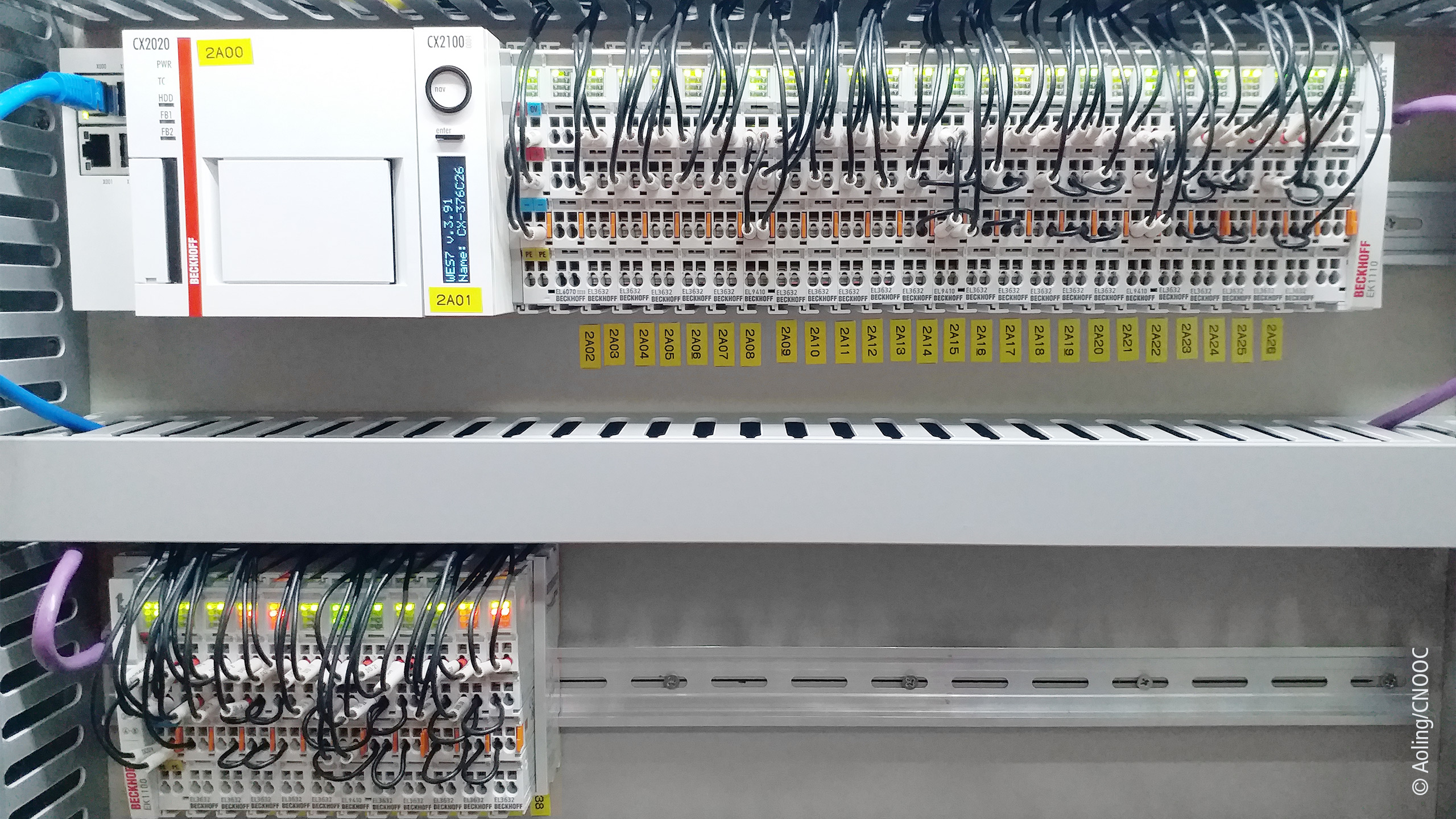

Offshore oil platforms feature condition monitoring with PC-based control
A reliable energy supply is essential for every industrial nation. It is for that reason that CNOOC, China's largest producer of oil and gas, places great value on monitoring its offshore platforms. The objective of a corresponding initiative implemented by Tianjin Aoling Industrial Automation Technologies Co., Ltd. (Aoling) for monitoring load-bearing structures is to make reliable predictions of load-bearing capacity on the basis of vibration analyses. To connect these technologies, the Chinese specialists rely on PC-based control and precise, system-integrated measurement technology from Beckhoff.
The steel structures of an offshore platform are exposed to extreme environmental conditions throughout their entire service lives. Difficult sea conditions ranging up to freak waves and aggressive seawater prey upon them without interruption. What’s more: microorganisms in the water cause severe electrochemical corrosion, which also weakens the mechanical integrity of the structures. Furthermore, it is clear that a remote offshore platform cannot be maintained regularly. Defects that would cause a standstill of the entire system or even an oil platform accident would be correspondingly costly. It is for this reason that the China National Offshore Oil Corporation (CNOOC) places great value on recording the real operating conditions and influences at work on the platform structures.
EtherCAT analog terminals as the basis for data acquisition
In the context of China's 13th Five-Year Plan, a production platform off the Chinese mainland in Bohai Bay was selected as a pilot project for the continuous monitoring of the platform structure. Various measuring points were specified based on the platform’s construction plans and onsite investigations with IEPE vibration sensors recording vibrations. Their signals are acquired by oversampling-capable EL3632 XFC EtherCAT Terminals for condition monitoring (IEPE) and transmitted to a CX2020 Embedded PC with up to 50 ksamples/s for evaluation.

The measurement system monitors the operating conditions of the platform and uses the vibration data to diagnose the loads on the steel structure. The objective of the pilot project is to ensure the integrity of the structures during their entire operating period and to be able to accurately predict the service life based on early indicators. This enables preventive measures to be implemented as required. Responsible for the implementation of the demanding project is the Aoling company, which has focused for years on the protection of offshore applications against wave energy, performing research in this area together with many Chinese universities, colleges and research institutes. Aoling develops innovative solutions, such as the condition monitoring implemented with Beckhoff technology. "Condition monitoring and diagnostics are akin to intensive-medicine monitoring for the platforms. In comparison to competitors' systems, Beckhoff offers ideal diagnostic tools for this purpose," explains Fan Lipeng of Aoling.
Detailed vibration analyses in real time
The vibration monitoring system comprises a total of 48 acceleration sensors, which have been mounted in explosion-proof housings in accordance with operating conditions. From the measurement points, the signal lines of the vibration sensors proceed to the control cabinet in the central control room, where they are connected through a routing level to the two-channel EL3632 IEPE terminals. The XFC function and synchronous scanning with up to 50 ksamples/s and 16-bit resolution ensure that the vibrations are captured in real time.
After analysis, processing and storage of the sensor data by the CX2020 Embedded PC, the information is transferred to the master computer of the oil platform for secondary calculation and storage. Visualization, alarm functions and data archiving are implemented there. At the same time, the master computer transmits all data to a central control room on shore via a fiber optic line.
At the same time, TwinCAT and the analysis application developed by Aoling in a high-level programming language are running on the CX2020, which simplifies data management and storage according to Fan Lipeng. In addition, the wide array of available I/O modules, their compact design and the flexibility of EtherCAT in terms of topology support later expansion and integration of additional functions. Aoling plans to increasingly use the advanced control technology from Beckhoff for condition monitoring. The intention is, for example, to also gradually implement machine learning, artificial intelligence (deep learning), neural networks and other functions on the TwinCAT platform.